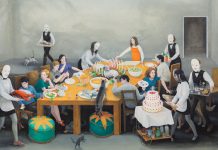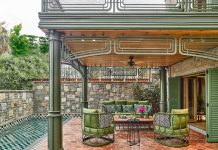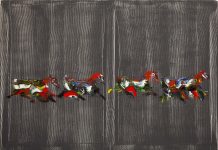We have visited the workshop of Tülin Yiğit Akgül, founder of the glass arts center Glasst, present for 5 years in the ancient Galata quarter that is the design and art capital of İstanbul.
The historic place consisting of workshop, gallery and store partitions, resembles a secret paradise that is very hard to discern from outside.
We call it paradise because Akgül stubs out the warm pots in the summer. First we think that is because of the temperatures, but later we find out that the reason is the withdrawal of an artist…
Sculptures in various forms of glass around the gallery we are not quite used to see, glass objects in the store each outstanding in its own design and color, glass blowing and processing benches, tools and hundreds of materials placed rigorously using the entire area of the historical building, all point to the hints of glass animated with unique spirit and labor.
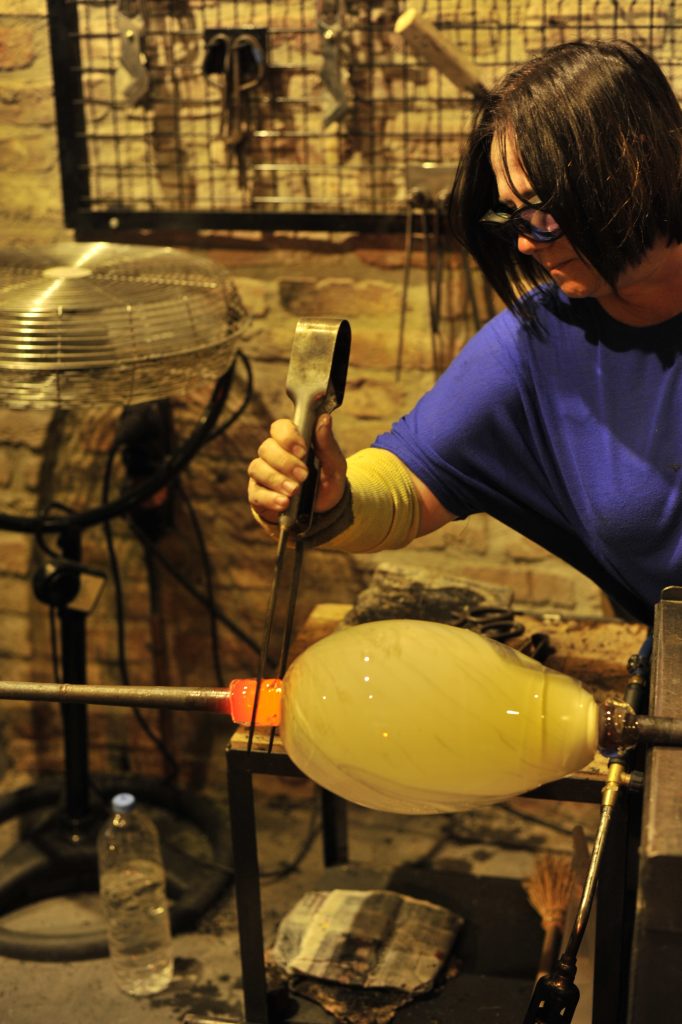 When did you meet glass?
When did you meet glass?
You could say that the first time I met glass in the true sense, was during the days when mom would occasionally let me play with the tiny animal figures she had bought from the Murano island in Italy at the age of 17, which she carefully preserved in her buffet. I guess I was around 3-4 then. I recall holding them up to the sunlight coming through the window, the spectrum, refraction of the light and them filling my colorful imagination. Whenever I get the chance to work with children, faced with their excitement from seeing glass production for the first time, I go back to that time and recall that emotion.
However, if you are asking about me meeting glass as a material, it goes back to 15-16 years ago when I was producing ceramic and got into some laughable efforts and experiences out of curiosity on glass, which is quite similar material to ceramic. I say laughable, because we had very limited knowledge on artistic glass production at the time and experimental methods were pretty disappointing. Our knowledge and experience increased over time with tenacity, research and of course as fine arts faculties started focusing on glass, and journals on glass became more widely available.
I guess glass is the only thing you use as material? Why?
In today’s art, there is no better or worse material. The material that provides the effect you desire is the one that matters. Plastic, bronze, wood, concrete… Doesn’t matter. What matters is the design. Who completed the job, what material was used, these are details only. But things are different when it comes to glass. Glass is a whole another material. There is a litany of technique to it. As such, you can always find a glass technique that corresponds to the impression you want to make. It is also a difficult and whimsical material. To master it requires real effort. Knowledge of physics and chemistry also becomes relevant. Therefore, glass production, especially in art, is a serious challenge. With a bronze statue, you spend one night for molding and a day to complete. However, to make the same statue from glass, you may have to wait months for the baking.
Why is the production process so long?
This isn’t the case for every kind of technique. If you are making a massive and large sculpture, there is a very important period called the annealing process, and the length of this process is directly proportionate to the scale of the job. If you don’t account for this, the glass artifact or product shatters. This shattering may happen after coming out of the oven or 2-3 years later. To explain in a nutshell, we often give the example of evil eye talisman: As you know, we have a tendency to attribute the shattering by themselves of talismans to evil eye. The actual reason is that they have not been annealed. Shattering is their fate.
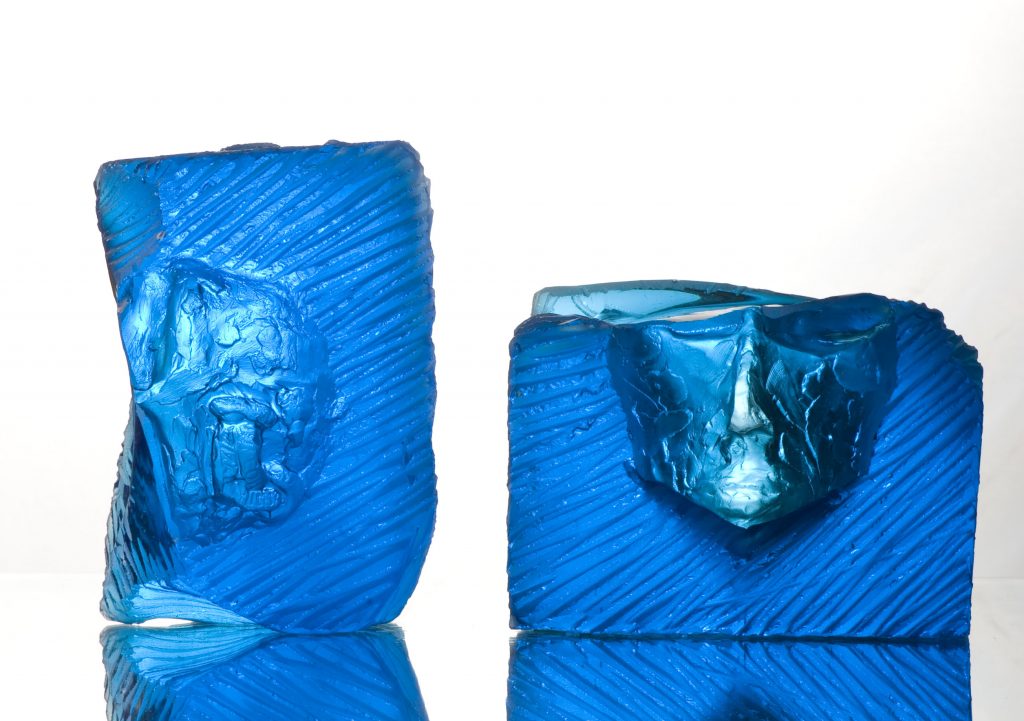 Which techniques do you use for production in the workshop, then?
Which techniques do you use for production in the workshop, then?
10-12 give or take. Hot glass blowing and specific techniques, sand casting, metal casting; relief, negative relief, lost wax-casting sculpture, cold glass sculpture, vitrography, and pareography, all techniques unlike each other.
How and why are you utilizing this abundance of techniques?
To begin with, it provides versatility. The only way to provide an expression that captures any result we desire, is this technical abundance. In addition, while the combination of those techniques, or “mix media”; provides visual substance, it sets us free as well. That is to say, it allows for more freedom in achieving various impressions from the same material and standing out with different combinations.
Are you a glass artist or sculptor? Is there a difference?
All processes proceed the same as with sculpture until the choice of material. Forming a model from clay, taking its mold and turning it into a wax model, afterwards making a heat-resistant mold and pouring glass into it, shaping and polishing a massive glass using whittling method… All those are known basic sculpture methods. It is the material being glass that classifies us as “glass artist”.
I will be honest: Any model I make could be of another material. If anything is to distinguish me from others, it is my skill to turn it into glass.
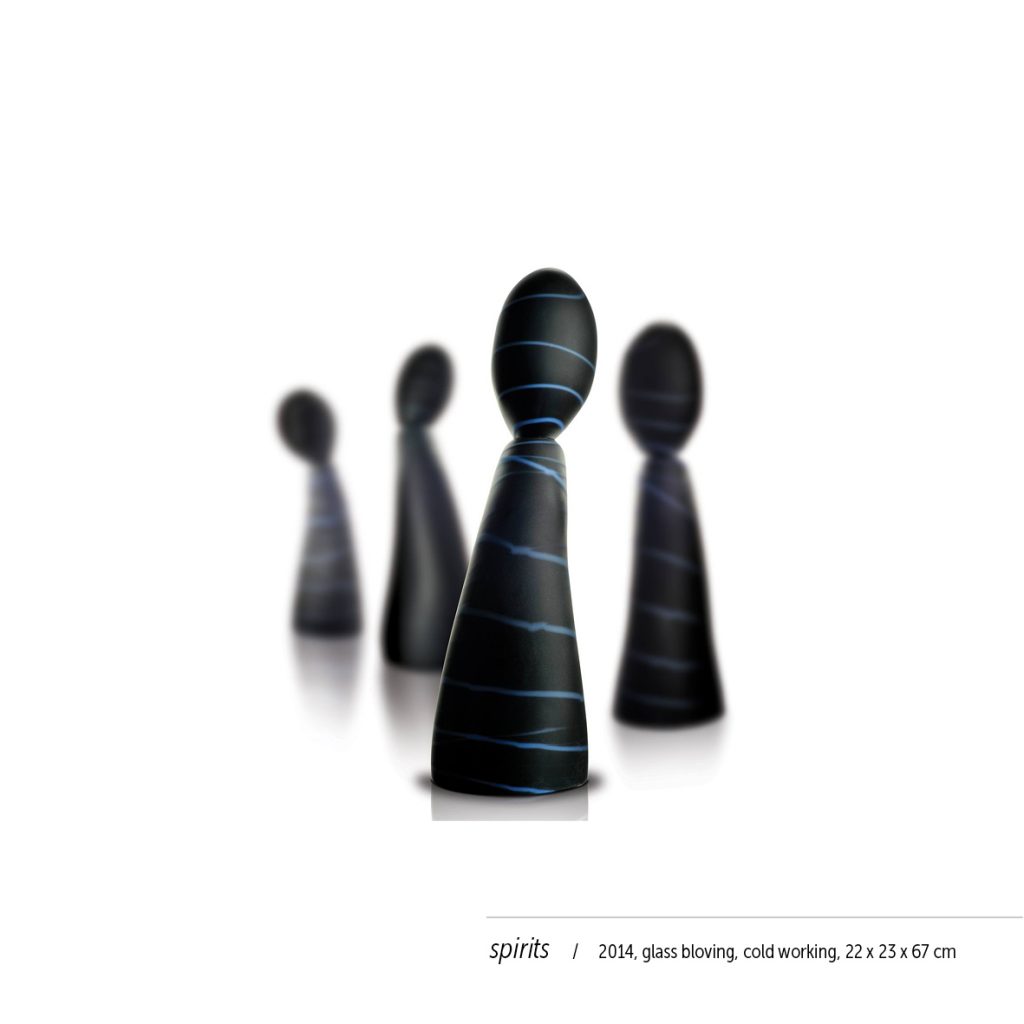 As a modern material, how does glass come to play in art?
As a modern material, how does glass come to play in art?
Simple. Its nature. Because glass is different from all other materials. It is the only solid to be considered liquid, to start with. Its relation with light, its relation with color, are different. With different techniques, it yields different results, and if you ask me, each of them are enchanting. I have occupied myself with other materials, I spent 10 years with ceramic. But no other material excited and encompassed me as much as glass.
We know that the presence of your experience isn’t limited to sculptures. In what other fields do you utilize glass in the workshop?
Store. As a team we are in an endeavor to put glass in every house, in the general sense. You can find entertaining, artistic, and all handmade designs unique to us in our store.
Our influence in architectural applications have also grown in the recent years. Glass has entered architecture as stained glass and in the late years, fusion. But its presence was mostly with productions repeating themselves and -I say this with humiliation- imitation implementations far from contemporary architecture. As such, driven by our motto, we wanted to try our hand at architecture and made designs that reveal all the features of glass, with an eye on the architectural criteria of the building. We like to work on architecture with lighting, glass walls, panels, decorative and artistic implementations.
Do you share your experience and knowledge?
Yes. I give lectures at the glass-ceramic departments of universities. Though AU FFA Department of Glass has a special place for me. The oldest institution that evaluates glass as a contemporary material in art and design, from an academical standpoint. I have been giving lectures with pleasure for a long time.
We are also holding workshop events at the workshop and if I am not mistaken, we have let 800 attendants experience glass blowing and ladling techniques.
What kind of team are you working with?
One that is pretty much like me… Of course, my team was formed over time. I insisted I would form the team I wanted, and I did. I wanted to be in a workshop that is tidy and rigorous, but also one that is as entertaining and interactive. My motto is the acceptance and dignification of glass as a contemporary material. I will be honest, turning a clay model into glass, sculpting from a body of glass is a pleasant experience. But I don’t want to enjoy this alone.
Glass production is teamwork, and that’s the way it should be. I understand that it is hard to stay on track. But those that pull through with us, remain with us. You could say I am on the right path, if you see the works of Glasst team and the young artists who get a chance in the gallery.
 We know that Glasst is the first artist studio in Turkey. How did you establish it- and what drove you to it?
We know that Glasst is the first artist studio in Turkey. How did you establish it- and what drove you to it?
As I’ve said, the goal of glass attaining its rightful place as a contemporary material was important to me. But to be sincere, it was my passion of producing with whatever technique I wanted freely, in my own liberal territory. I’ve built my workshop on the foundations that I’ve accumulated from the trainings I’ve received from around 20 artists during 15 years. Without any support. My dream is to leave it to someone with the same passion coming after me. Glasst intends to endear glass to anyone it touches with a unique reflection.
Where can we see your works? Where do you exhibit your works?
6 personal exhibitions and exhibitions I keep participating in in Turkey and various places around the world. For anyone who want to reach me though, my workshop is the place to go. Anyone who is interested in, curious about, wants to gain experience in glass can find answers at Glasst… In addition, another exciting thing is works from young artists found in our gallery. The works of proven masters in this field and young talents stand side by side in our gallery.
Let me ask the questions this time: Do you know what else is as exciting as producing a glass sculpture?
No?
Owning a glass sculpture 🙂





